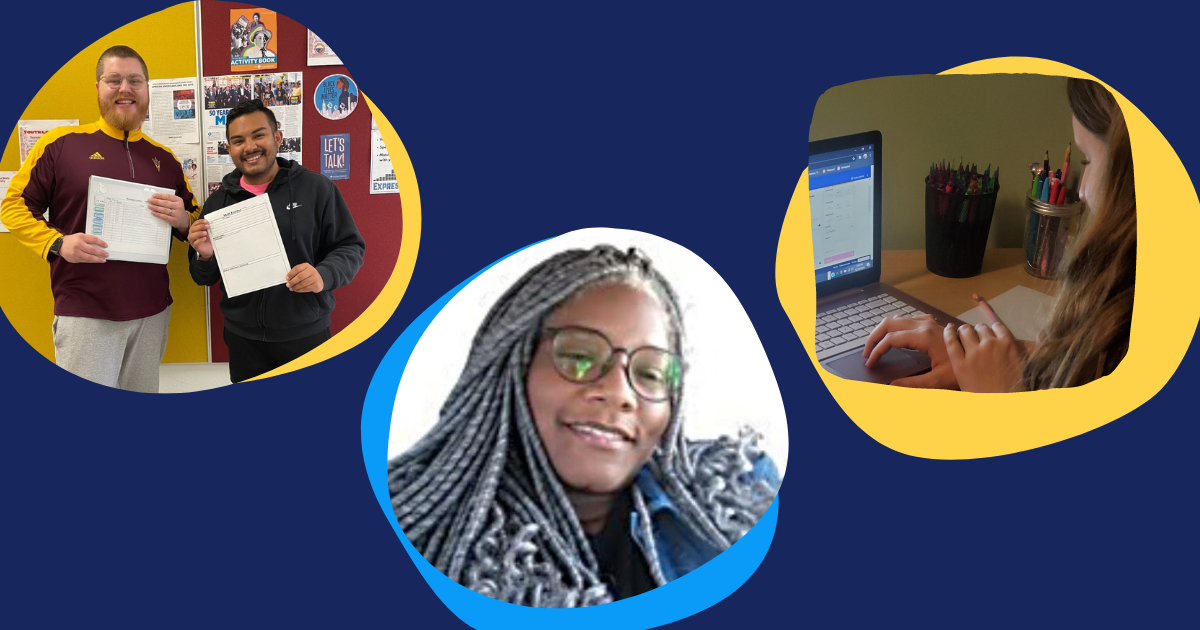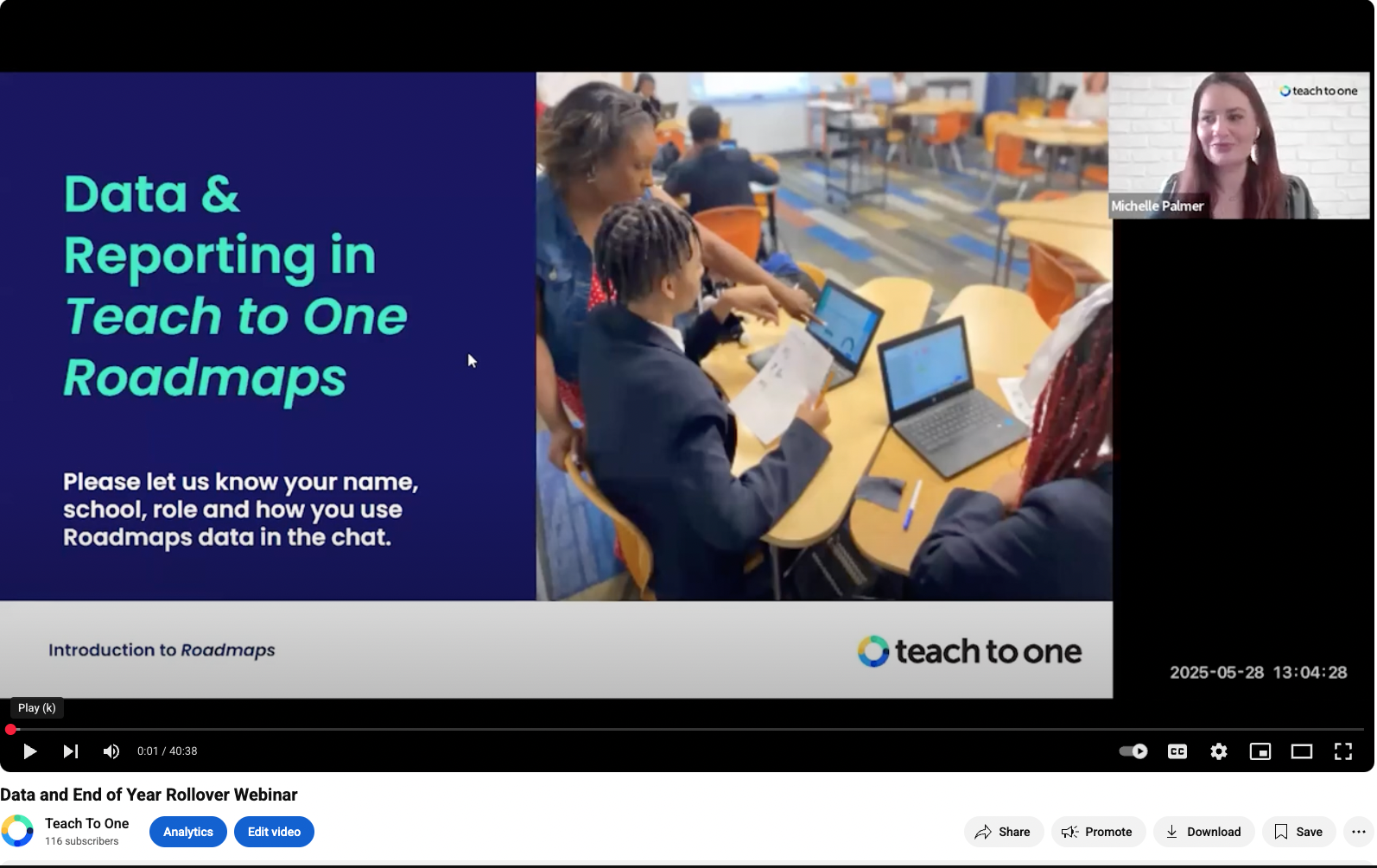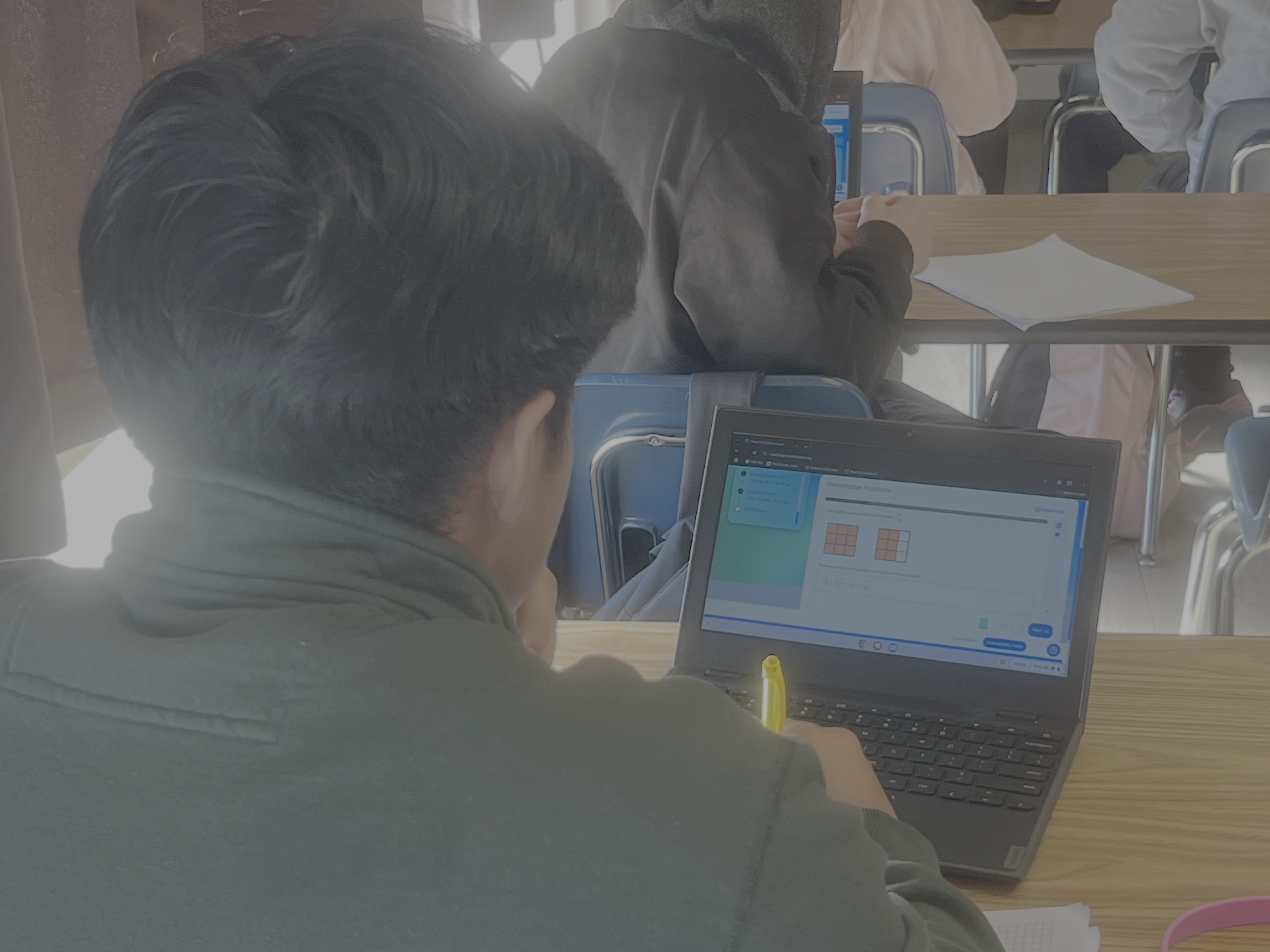Educators are using technology to ease Math teacher workloads. Here’s what they’ve learned.
April 21, 2022
By Teach to One

Does educational technology work in the classroom? Can it actually ease math teacher workloads so they can do more — and provide focused, intensive instruction to those who really need it?
Here’s what two educators, two students, and one parent have to say.
Dr. Tajuana Smith discusses using Roadmaps for intervention
Dr. Tajuana Smith, Math Intervention Specialist at Uplift Wisdom in Dallas, Texas, shared her thoughts on using Teach to One Roadmaps as an intervention tool. She says,
“Student engagement has been difficult in many school settings for various reasons. However, as educators we are charged with the task of finding activities that engage the students and help build them for success.”
Uplift Wisdom put into place a dedicated class period for students to work through math skills. Their goal with this interventional time is to close learning gaps that widened as a result of lost instructional time during the pandemic.
Dr. Smith says the initial launch of this interventional block was bumpy, but that the team persevered. Always at the center: the scholars. To encourage engagement and progress, the math team implemented an incentive program called “Flip Friday,” a day with shortened class periods and an afternoon of social activities. In order to participate in this once-a-month reward, scholars must demonstrate a minimum of one skill per week.
This is just one example of Uplift Wisdom being creative around student engagement and intervention initiatives. Dr. Smith says,
“We are pleased with the progress of the scholars and can’t wait to see the results of their math achievements through the various assessments we administer locally and statewide.”
Dr. Smith is an Intervention Specialist at Uplift Wisdom Preparatory in Dallas.
ASU Prep teachers use Roadmaps to create a culture of collaboration
Two ASU Prep teachers say the power of Roadmaps helped close the gaps in their students’ math knowledge.
“We whole-heartedly believe in meeting students where they are at instead of expecting them to reach grade level on their own,” says Mr. Anaya and Mr. V.
Roadmaps measures student proficiency levels across grade levels. Because math is cumulative, it’s critical that teachers can determine if — and where — students have gaps in learning from previous grades.
Roadmaps is built on assessment diagnostics that function at a skill-by-skill level, providing deep insight into each student’s math background. This is key to mapping a learning path.
Mr. Anaya and Mr. V say this approach is even more important because of the effects of the pandemic on their students.
“Many students have missed out on immersion with their education due to the pandemic, and this created a void in their academic, social, and emotional lives.”
Roadmaps lets Mr. Anaya and Mr. V to differentiate instruction in their classrooms. Students are able to work on skills from previous grades while instruction continues on current-grade skills. This has closed learning gaps, and also helped Mr. Anaya and Mr. V cultivate a collaborative culture.
“We’ve worked with our students to create a culture of collaboration in the classroom, and one that allows students to take ownership of their learning.”
Mr. Anaya and Mr. V say they look for ways to get students involved and engaged in their learning and to get them to take ownership of their progress. To facilitate this, they created tools such as Skill Tracker and Academic Growth Ladder.
Skill Tracker enables students to take initiative through note taking. It guides them through Roadmaps’ skill cards, vocabulary needed for the skill, sample assessment questions, virtual learning activities, and practice sets. The graphic organizer helps prepare students for assessments.
Academic Growth Ladder helps track student progress on skills. Mr. Anaya and Mr. V use it to review progress with each student once a month. Student and teacher then work together to create monthly goals, discuss progress made, and set expectations. As a baseline, Mr. Anaya and Mr. V expect students to complete five skill tracker sheets and pass (with 80% or above) five skills each week.
“We’ve seen tremendous success in closing our students’ mathematical gaps since using Roadmaps and implementing these tools.”
Mr. Anaya and Mr. V teach at ASU Prep in Arizona
Students see value in independent, individualized learning from Roadmaps
“It’s helpful to see how many more skills I have to finish Algebra 1, so I know what I should work on. I also like that I can work on skills when I want and how I want. I don’t need to only work on math that everyone in my class is working on.
Math is my favorite subject. I like that Roadmaps is something that I can do on my own time. Sometimes in school I am bored because I already understand the math and this allows me to work on math that is harder than my grade level.”
Connor is a 7th grade student Roadmaps user.
“I like that Roadmaps showed me any skill that I needed from 7th and 8th grade. I also really enjoy learning through School Yourself lessons and being able to take an assessment again if I did not do well on it. I love that there are many types of practice that I can do and that I can make the choices.”
Hailey is an Algebra 1 high school student Roadmaps user.
Many students have debilitating anxiety and fear of failure in math. Have you seen this in your child? What is Roadmaps doing to bolster your child’s confidence levels?
“It’s the low stakes assessments, the quick wins, and the sense of accomplishment (“I knocked off 2 skills today, Dad”). My daughter is thrilled when she gets 80% or 100% on the assessments, but not devastated if she gets something lower. It’s like these micro challenges for her and her success in conquering prior ones gives her confidence that she can conquer future ones.
“Roadmaps made a huge difference. Alex said she hated math before and now no longer says that. She loves the fact that she is ahead and that what they are now teaching her in school seems a bit easy.”
Joel is a parent of a high schooler studying Algebra 1.
Latest Posts

Recording: Data and End of Year Rollover Webinar
In this 45-minute webinar recording, Michelle Palmer, Senior Director of Customer Success, and Liat Greenspan, Associate Director of Program Success, explain how to assign a skill or pathway, use the Teacher Dashboard to identify struggling students, leverage the Reports Hub for weekly planning, and monitor growth and engagement on the Progress Page.

Getting Students Engaged in Math at Valley Charter
Students arrive at their assigned seats equipped with laptops and individualized Teach to One Roadmaps packets, which include a work time poster, a note-taking sheet, and graph paper.

Webinar Recording: Unlocking Algebra
On Tuesday, May 13, TNTP and New Classrooms released the report: Unlocking Algebra – What the Data Tells Us About Helping Students Catch Up. On the same day Adam Meier, Partner, Research Center of Excellence, TNTP, and Joel Rose, Co-founder and Chief Executive Officer, New Classrooms, presented the findings, recorded in the webinar below. Looking […]